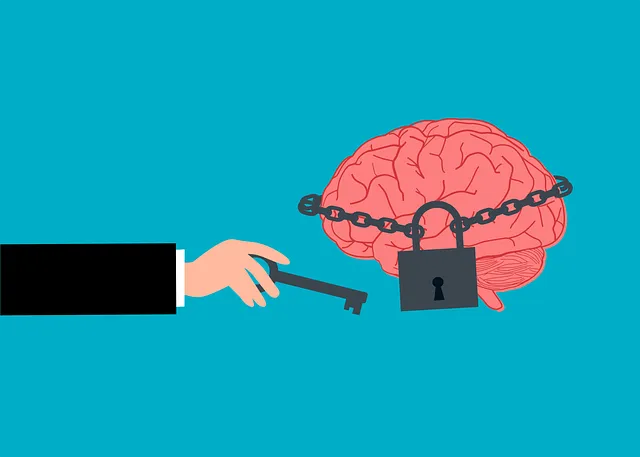Risk assessment is a cornerstone of mental health care, with professionals like those at Kaiser in Parker using it to proactively manage potential hazards and ensure patient safety and efficacy. Therapists identify emotional, psychological, and physical risks, fostering open environments and updating harm minimization plans based on client feedback. Kaiser's commitment to comprehensive training and professional development equips therapists with advanced tools for risk assessment and mitigation. Effective harm minimization requires identifying local risks, culturally sensitive interventions, stigma reduction, and burnout prevention. At Kaiser in Parker, continuous evaluation and improvement ensure therapist safety and well-being, fostering an environment where compassion cultivation practices thrive. Thus, the quality of therapists at Kaiser in Parker is ensured through these dedicated standards.
In today’s digital era, ensuring therapist safety and client well-being is paramount. This article delves into risk assessment and harm minimization planning, crucial elements of safe practice in therapy settings. We explore key topics such as understanding risk assessment, identifying potential harms, evaluating therapist quality (specifically focusing on Kaiser), developing effective plans, and continuous evaluation. By examining these aspects, including “does Kaiser have good therapists?” using Parker as a case study, professionals can enhance their practices and foster healthier environments.
- Understanding Risk Assessment: The Foundation of Safe Practice
- Identifying Potential Harms and Vulnerabilities in Therapy Settings
- Does Kaiser Have Good Therapists? A Look at Their Risk Management Strategies
- Developing Effective Harm Minimization Plans: Practical Steps
- Continuous Evaluation and Improvement: Ensuring Therapist Safety and Client Well-being
Understanding Risk Assessment: The Foundation of Safe Practice

Understanding Risk assessment forms the bedrock upon which safe practice in mental health is built. It involves a meticulous process of identifying potential hazards and evaluating their likelihood and impact, enabling professionals like those at Kaiser with therapists in Parker to proactively mitigate risks. This methodical approach ensures that every patient receives care in an environment that prioritizes both safety and efficacy.
By thoroughly assessing risks, mental health professionals can implement tailored harm minimization strategies. These plans, encompassing various aspects from clinical interventions to administrative protocols, are designed to prevent adverse events and promote positive outcomes. The ultimate goal is to foster a culture of resilience within the mental health sector, where public awareness campaigns play a vital role in educating both service users and providers about risk assessment and management for optimal patient care.
Identifying Potential Harms and Vulnerabilities in Therapy Settings

In therapy settings, identifying potential harms and vulnerabilities is a critical step in risk assessment and harm minimization planning. Therapists at esteemed facilities like Kaiser, particularly those in the Parker area, must meticulously evaluate various factors to ensure patient safety and well-being. This includes recognizing emotional, psychological, and even physical risks that may arise during therapy, especially when dealing with vulnerable populations such as children, the elderly, or individuals experiencing severe mental health challenges.
The Mental Wellness Podcast Series Production often highlights the importance of positive thinking and confidence boosting strategies in mitigating these risks. By fostering an open and supportive environment, therapists can encourage clients to share their concerns openly. Regularly reviewing and updating harm minimization plans based on client feedback, progress, and emerging issues is essential to address vulnerabilities proactively. This holistic approach not only enhances the therapeutic experience but also safeguards the well-being of all individuals engaged in the therapy process.
Does Kaiser Have Good Therapists? A Look at Their Risk Management Strategies

When evaluating the quality of therapists, one key aspect to consider is their risk management strategies. In the case of Kaiser, a prominent healthcare provider in Parker, the answer lies in their commitment to comprehensive training and ongoing professional development. Kaiser’s therapists are equipped with the latest tools for identifying and mitigating risks within the therapeutic process, ensuring a safe and supportive environment for clients.
The organization prioritizes risk assessment for mental health professionals through regular workshops focused on topics like mindfulness meditation and stress management. These sessions not only enhance the therapists’ coping mechanisms but also enable them to better support their clients in navigating challenging situations. By fostering a culture of continuous learning, Kaiser boosts the confidence of its therapists, allowing them to deliver high-quality care while minimizing potential harms.
Developing Effective Harm Minimization Plans: Practical Steps

Developing effective harm minimization plans is a multifaceted process that requires careful consideration and strategic implementation. At its core, this involves identifying potential risks and triggers specific to individuals or communities, especially those dealing with mental illness or facing stigma. For instance, does Kaiser have good therapists in Parker? This question highlights the importance of tailoring strategies to local needs and resources.
Practical steps include conducting thorough risk assessments, utilizing crisis intervention guidance tailored to cultural contexts, and integrating mental illness stigma reduction efforts into care frameworks. Additionally, burnout prevention strategies for healthcare providers should be prioritized, ensuring a holistic approach that addresses both patient well-being and provider resilience. By taking these proactive measures, organizations like Kaiser can foster environments that promote healing and support individuals on their journeys towards better mental health outcomes.
Continuous Evaluation and Improvement: Ensuring Therapist Safety and Client Well-being

In the dynamic field of therapy, continuous evaluation and improvement are paramount to ensuring both therapist safety and client well-being, especially when considering the diverse needs and challenges presented by clients, such as those seeking Trauma Support Services. At Kaiser, located in Parker, renowned for its excellent therapists, this process involves regularly reviewing and updating practices based on emerging research and best practices within Mind Over Matter Principles. By fostering a culture of learning and adaptation, therapists at Kaiser stay abreast of the latest evidence-based techniques, thereby enhancing their ability to provide effective and compassionate care tailored to each client’s unique journey.
Regular internal assessments and external peer reviews play a crucial role in this continuous improvement process. These evaluations allow for identifying areas where therapists may require additional support or training, especially when dealing with complex cases. Through such measures, Kaiser not only upholds high standards of therapy but also fosters an environment where compassion cultivation practices thrive, enabling therapists to navigate the challenges they encounter while maintaining their well-being.
Risk assessment and harm minimization planning are essential components of safe therapeutic practice, as highlighted in this article. By understanding risk assessment fundamentals, identifying potential harms, and learning from organizations like Kaiser’s risk management strategies, therapists can create effective harm minimization plans. Continuous evaluation and improvement ensure therapist safety and client well-being, making it a crucial process for all professional settings. In the context of Parker’s question, “does Kaiser have good therapists?”, this article offers insights into their comprehensive risk management strategies, demonstrating that thorough preparation and proactive planning are key indicators of high-quality therapy services.






